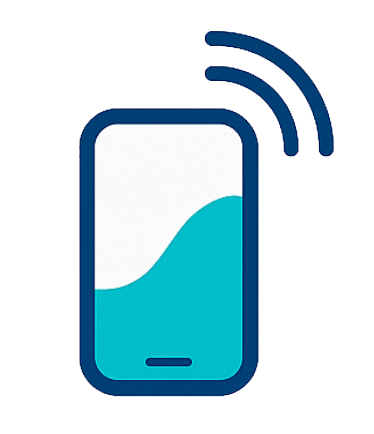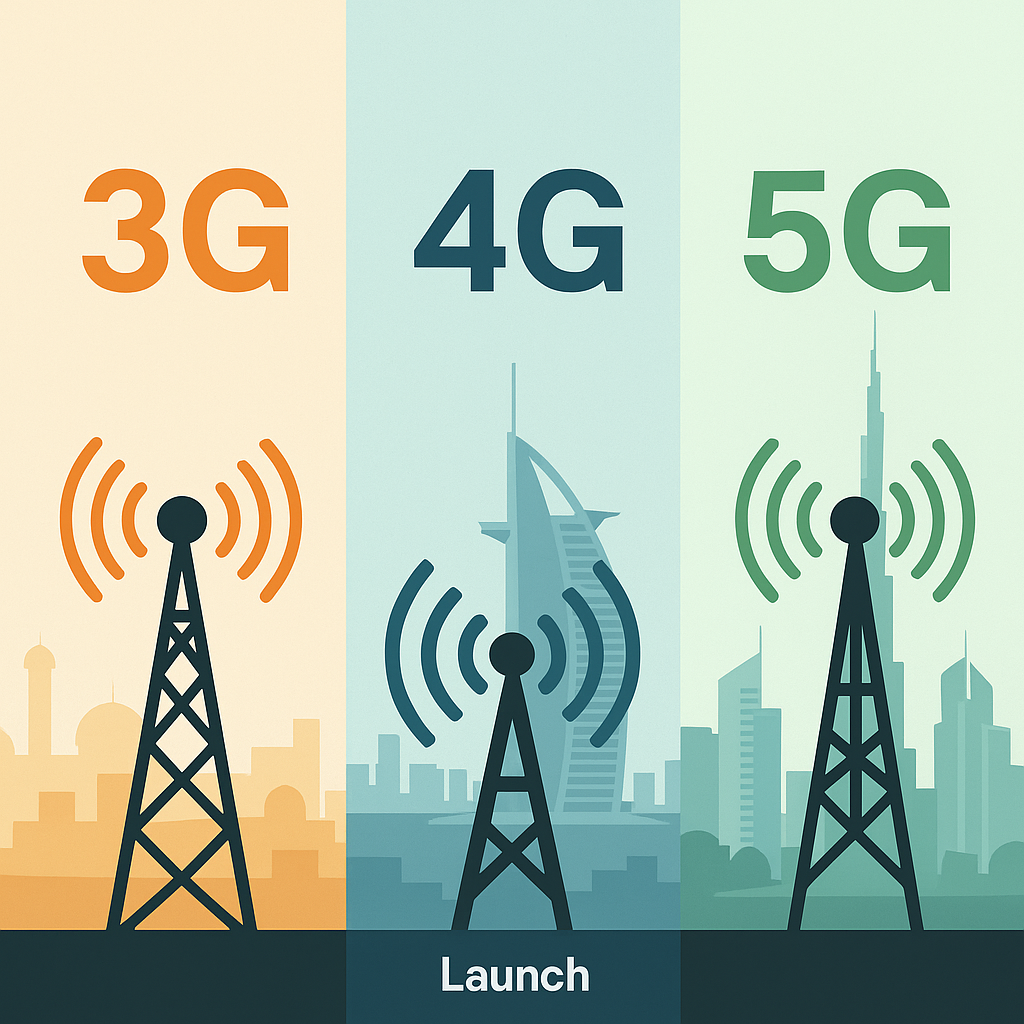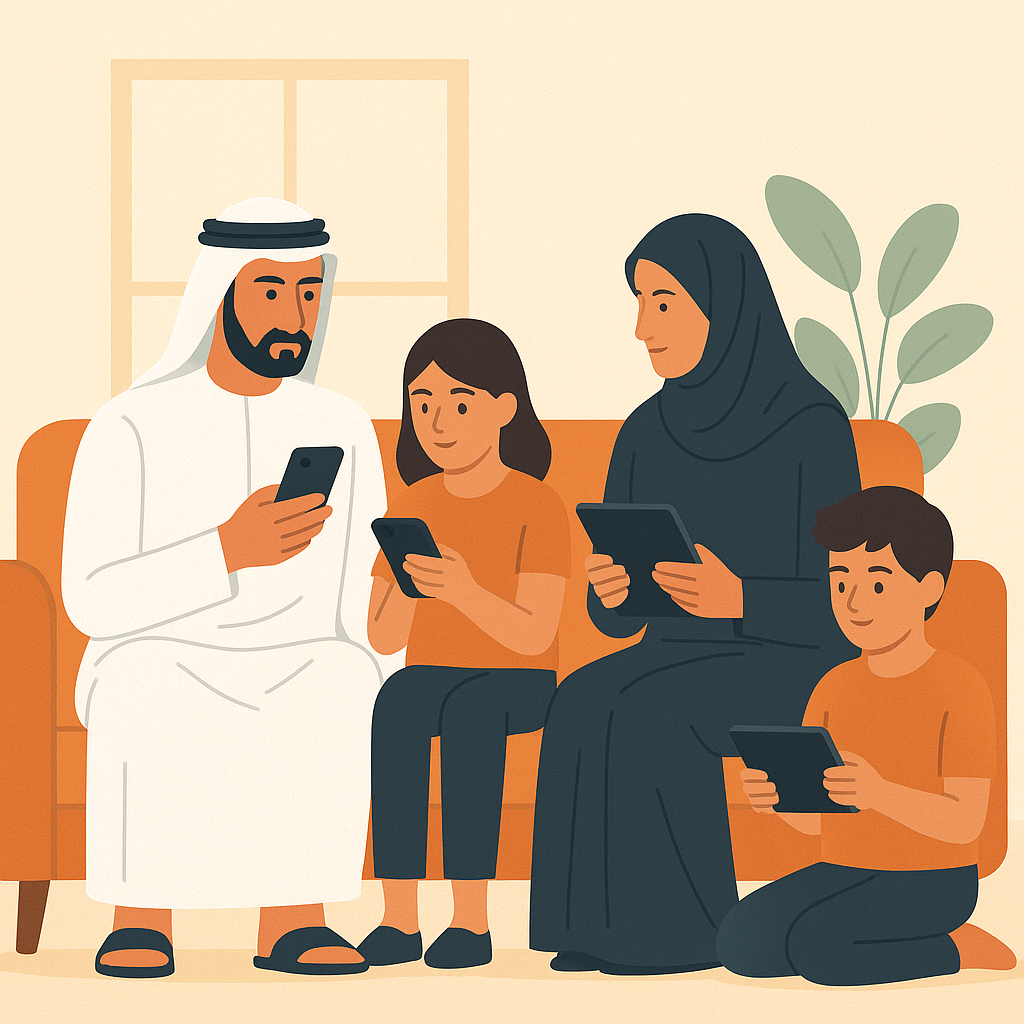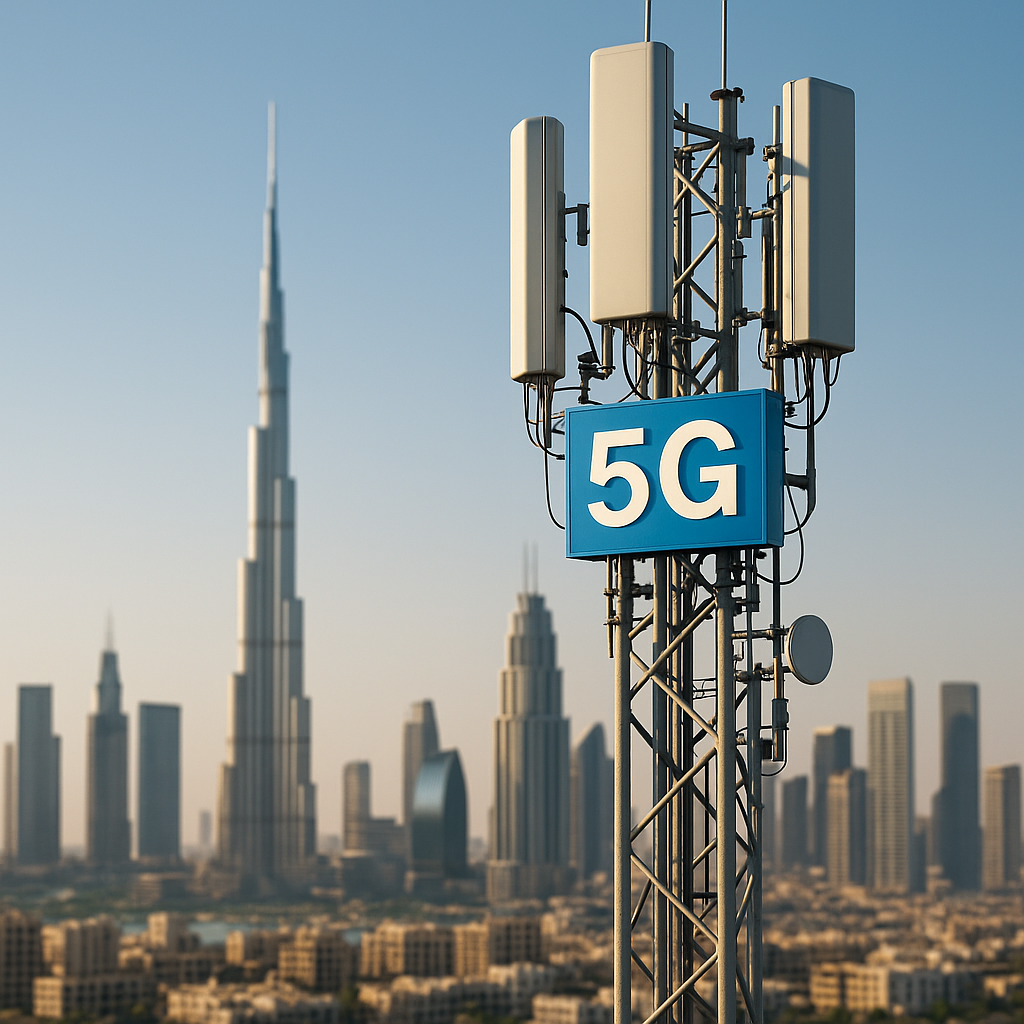The United Arab Emirates has consistently been at the forefront of telecommunications innovation in the Middle East. Over the past two decades, the nation's mobile networks have undergone a remarkable transformation, evolving from basic 3G services to the cutting-edge 5G technology available today. This journey has fundamentally changed how residents communicate, work, and access information.
The Dawn of Mobile Internet: 3G Era
The UAE's mobile revolution began in earnest with the introduction of 3G networks in the early 2000s. This technology represented a quantum leap from the voice-centric 2G networks, enabling basic internet access on mobile devices for the first time.

Key milestones during the 3G era:
- 2003: Etisalat launched the UAE's first 3G network
- 2006: du entered the market, increasing competition
- Average speeds: 0.5-2 Mbps
- Primary use cases: Basic web browsing, email, low-resolution video
While revolutionary at the time, 3G had significant limitations. Connection speeds were modest, video streaming was often impractical, and network coverage was inconsistent outside major urban centers. Nevertheless, this era laid the foundation for the mobile-first society that would develop in the UAE.
The 4G Revolution: Changing How We Connect
The launch of 4G LTE networks around 2011 marked a transformative period for mobile connectivity in the UAE. This technology delivered significantly faster speeds, lower latency, and greater network capacity, enabling experiences that were previously only possible on desktop computers.
3G Era
2003-2011
Basic mobile internet
4G Launch
2011
Mobile video revolution
4.5G Advancements
2015-2018
Enhanced speeds
5G Deployment
2019-Present
Ultra-fast connectivity
Impact of 4G on UAE Society
4G technology fundamentally reshaped how UAE residents interacted with their mobile devices:
- Video streaming became practical, leading to the rise of platforms like Starz Play and Icflix
- Mobile payments gained traction with services like Apple Pay and Samsung Pay
- Ride-hailing apps like Careem and Uber transformed urban transportation
- Social media usage exploded as sharing photos and videos became instantaneous
By 2015, the UAE had achieved near-complete 4G coverage across all seven emirates, with average speeds of 15-30 Mbps - among the fastest in the world at the time.
The 5G Transformation: A New Era of Connectivity
The UAE made history in 2019 by becoming one of the first countries globally to commercially deploy 5G networks. This next-generation technology promised not just incremental improvements, but a fundamental transformation of what mobile networks could deliver.
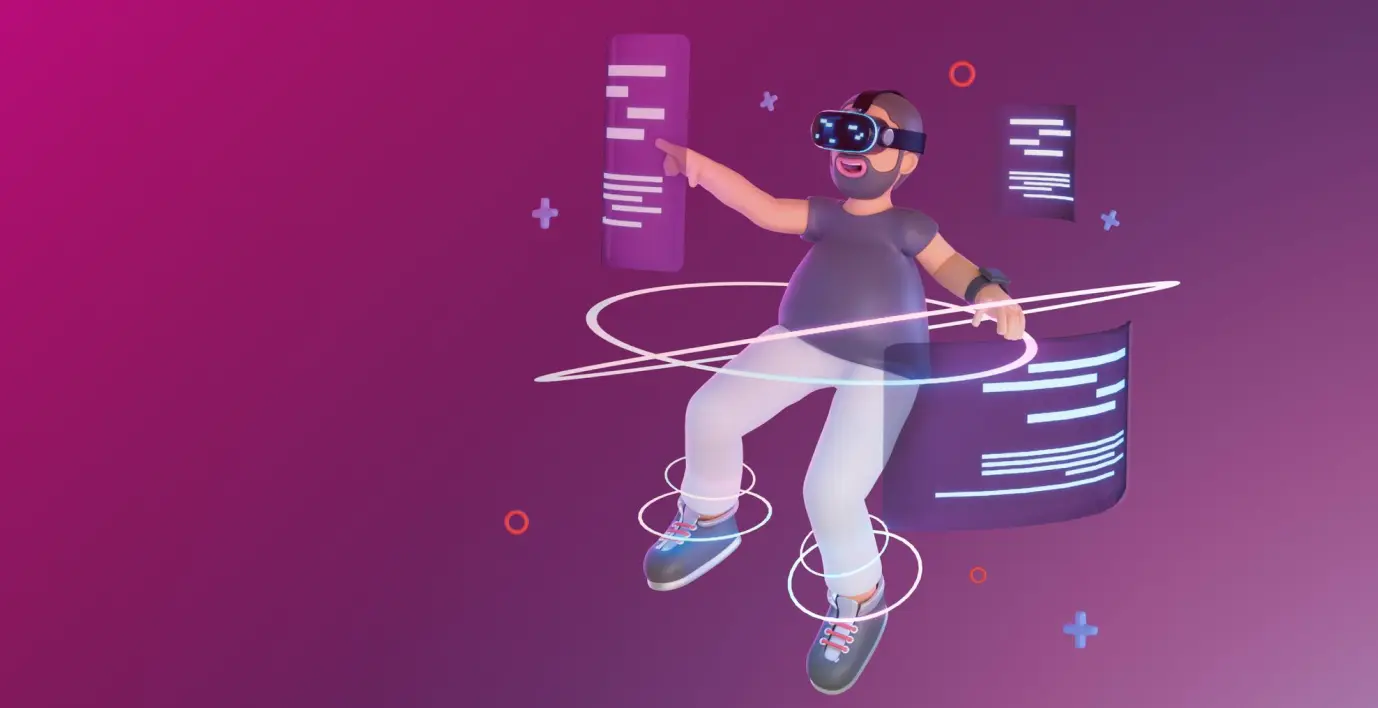
Key Advantages of 5G
Blazing Speeds
5G delivers speeds up to 100 times faster than 4G, with typical downloads of 300 Mbps to 1 Gbps in optimal conditions.
Ultra-Low Latency
Response times as low as 1 millisecond enable real-time applications like remote surgery and autonomous vehicles.
Massive Connectivity
5G can support up to 1 million devices per square kilometer, enabling smart cities and IoT ecosystems.
5G Use Cases Transforming the UAE
The implementation of 5G in the UAE has enabled groundbreaking applications:
- Smart City Infrastructure: Dubai's Smart City initiative leverages 5G for traffic management, utility monitoring, and public safety systems
- Telemedicine: Hospitals offer remote consultations with near-instantaneous transmission of medical imaging
- Augmented Reality: Enhanced shopping experiences and tourism applications through AR overlays
- Industrial Automation: Factories implement real-time monitoring and control systems
- Cloud Gaming: High-performance gaming without expensive hardware through services like GeForce Now
What This Evolution Means for UAE Residents
The journey from 3G to 5G has fundamentally transformed the daily lives of UAE residents:
1. Unprecedented Connectivity
With 5G coverage now available across 90% of populated areas, UAE residents enjoy seamless connectivity whether in urban centers, suburban communities, or even remote desert locations.
2. Economic Opportunities
The advanced network infrastructure has positioned the UAE as a regional tech hub, creating thousands of high-value jobs in technology sectors and enabling new business models.
3. Enhanced Quality of Life
From telecommuting options to smart home automation, the advanced networks have made daily life more convenient and efficient.
4. Future-Ready Society
The UAE's commitment to network evolution ensures residents will be among the first to experience emerging technologies like holographic communications, autonomous transportation networks, and advanced AI applications.
Looking Ahead: The Future of UAE Mobile Networks
As impressive as the current 5G networks are, the UAE continues to look toward the future. Telecommunications providers are already conducting trials of 6G technology, which promises even more revolutionary capabilities:
- Terahertz frequency bands enabling multi-gigabit speeds
- AI-integrated networks that self-optimize in real-time
- Seamless integration between terrestrial and satellite networks
- Advanced holographic communications
The UAE's Telecommunications and Digital Government Regulatory Authority (TDRA) has established an ambitious roadmap to maintain the nation's leadership position in mobile connectivity through 2030 and beyond.
The UAE's Connectivity Advantage
Today, the UAE boasts some of the world's fastest mobile networks, with average 5G download speeds exceeding 300 Mbps - significantly faster than global averages. This connectivity advantage has become a key factor in the nation's economic diversification strategy and quality of life for residents.
The evolution from 3G to 5G represents more than just technical upgrades - it's a transformation in how UAE residents live, work, and connect with the world. As networks continue to advance, they will undoubtedly unlock new possibilities that we can only begin to imagine today.
Back to all articles